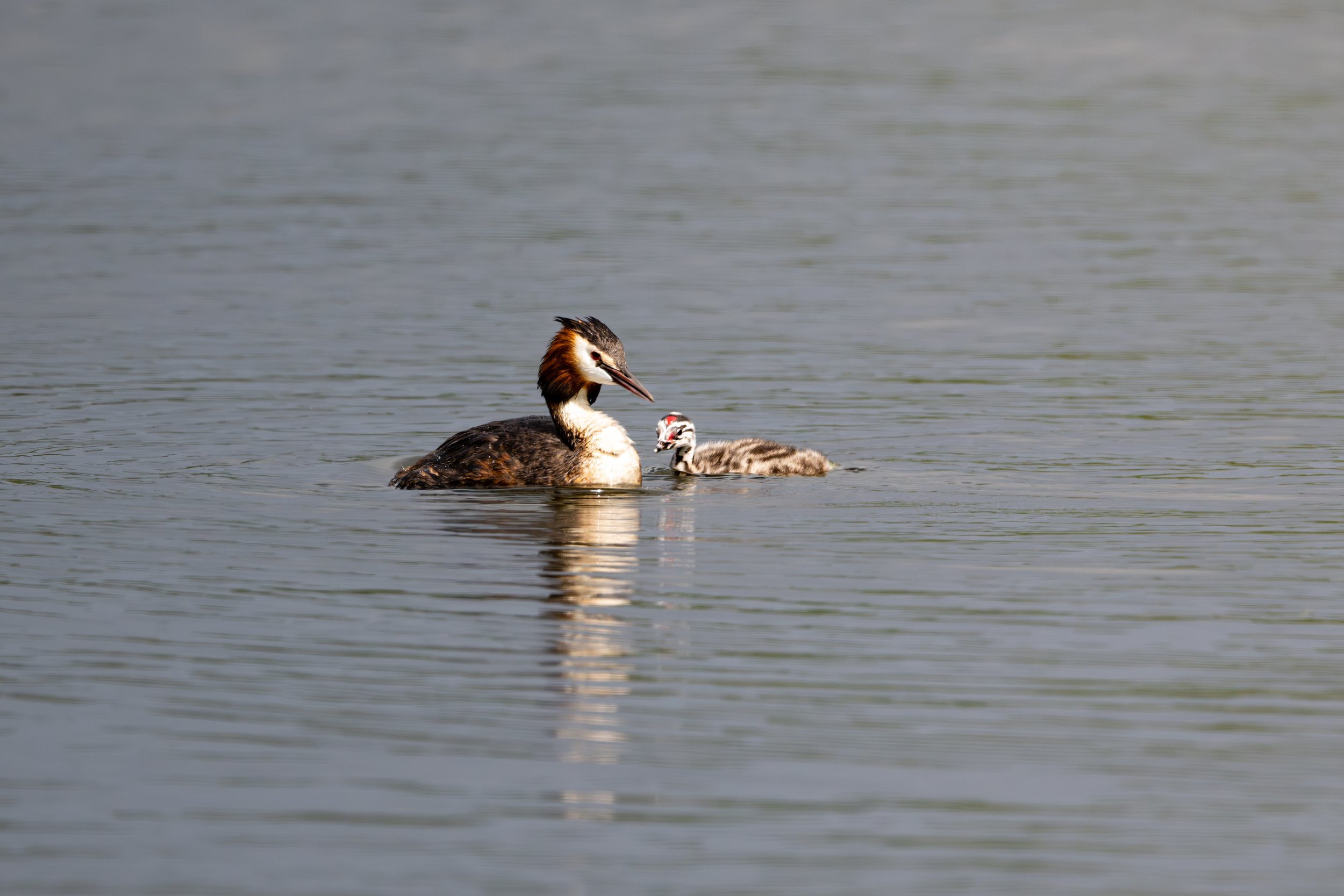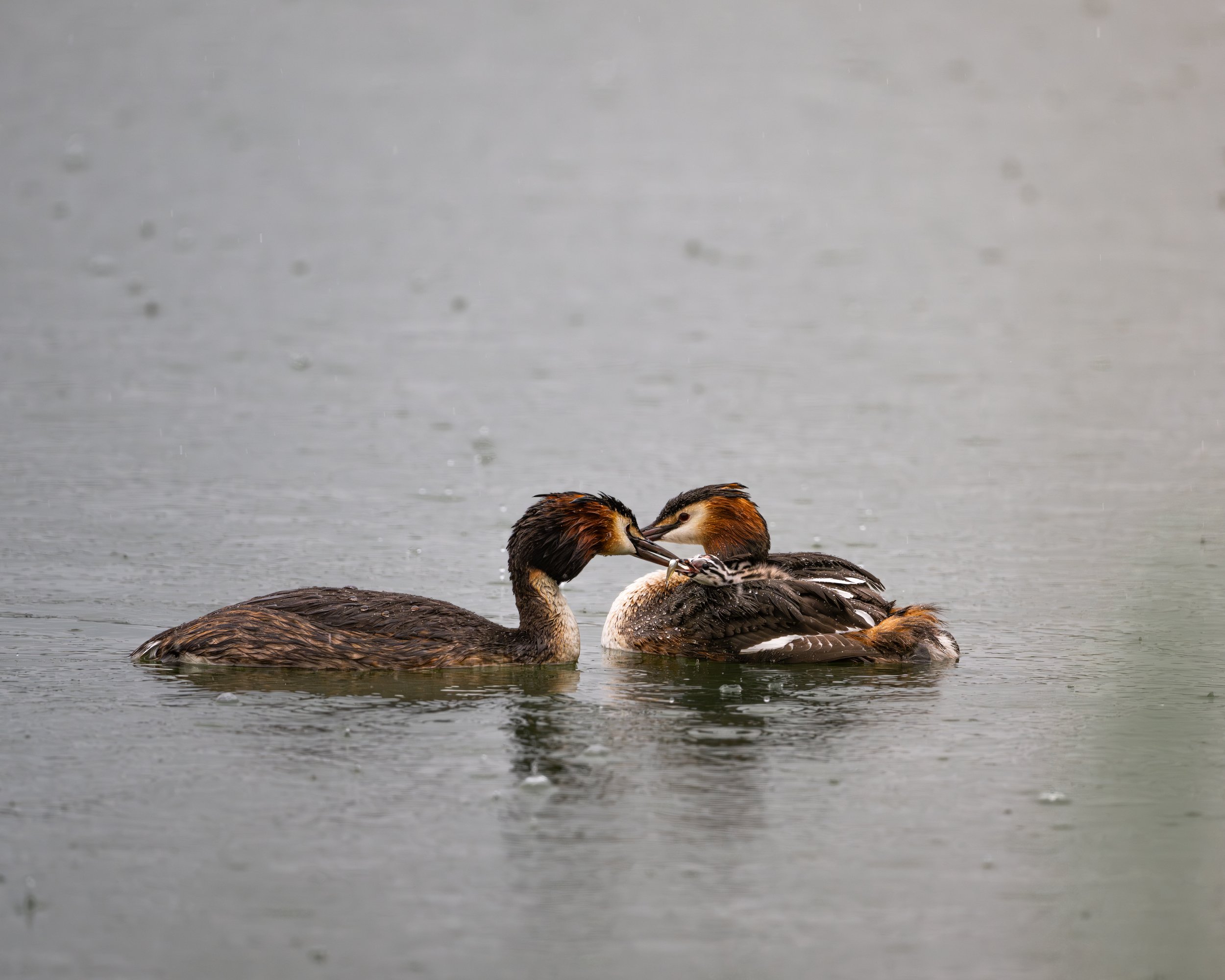Great Crested Grebe raising chicks at WWT London Wetlands Centre
Tucked low in my hide by the reed-fringed lake, I documented a pair of great crested grebes tirelessly raising their brood. Over a few weeks, I witnessed them sheltering eggs, feeding hatchlings, and gently offering tiny fish in all weather—rain-lashed mornings and golden afternoons alike. Their parenting extended beyond simple feeding; I watched them coax the chicks into learning basic hunting skills by teasing them with the fish before finally handing it over. Tragically, after nurturing four eggs, the little ones were lost—likely to the ever-watchful local herons. Despite the heartbreak, it was a rare insight into the dedication of these striking waterbirds.
Interesting Facts
Great crested grebes, known for their elaborate courtship dances, play a critical role in wetland health by controlling fish populations. Their distinctive “racing stripe” chicks often ride on their parents’ backs for warmth and safety. Once near extinction in Europe due to the feather trade, this species’ recovery is a conservation success story, underscoring the importance of preserving healthy wetland habitats for future generations of grebes and countless other water-dependent wildlife.
Author: Victor Sulakvelidze

Great crested grebe chicks often stay on their parents backs for warmth and safety

Enticing the chick with the fresh catch would stimulate learning which is crucial for the life in wetlands

It is common teaching tactic to leave the fish near the chick to instigate the play so they can learn how to catch their lunch

Love filled feeding is a key moment in any great crested chicks life, especially when it is pouring from the skies

Ripping the fish out of its parents beak!